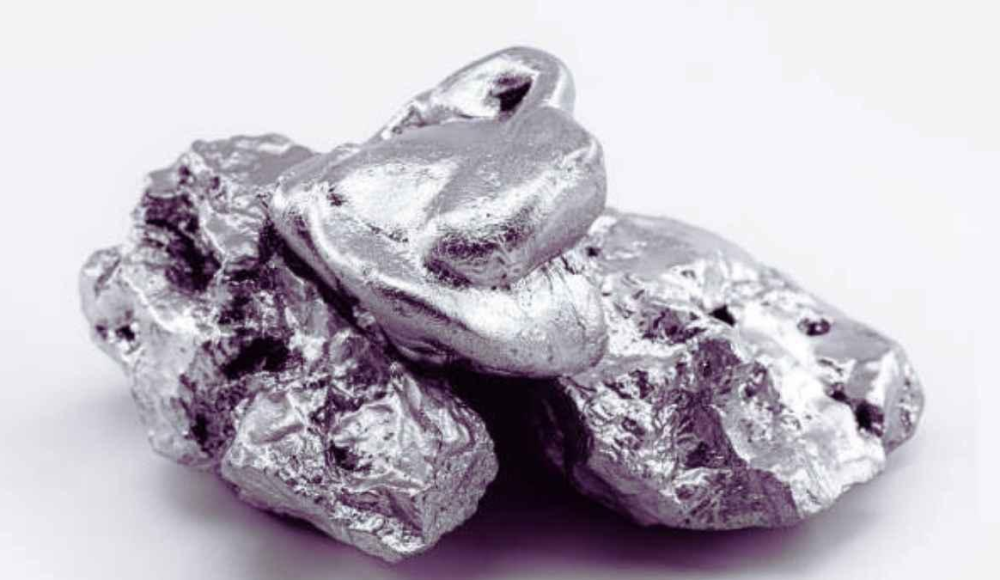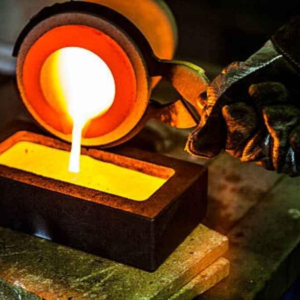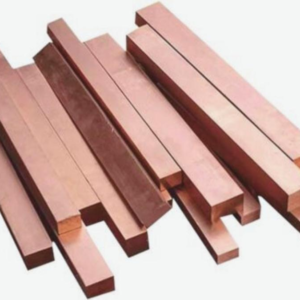Você precisa de fatos claros sobre o ponto de fusão do titânio? O metal brilhante é indispensável na indústria aeroespacial, automotivo, e indústrias manufatureiras. A falta de conhecimento adequado pode resultar em baixa seleção de materiais e processamento defeituoso de materiais. Este artigo é tudo sobre as propriedades de fusão do titânio.
Que temperatura derrete o titânio?
O titânio tem um ponto de fusão de cerca de 1.668 ° Celsius ou 3.034 ° Fahrenheit. O alto ponto de fusão do titânio não reduz significativamente sua força em altas temperaturas. A temperatura de fusão desempenha um papel importante no elenco, soldagem, e liga para manusear e aplicá -lo corretamente em muitos projetos de engenharia.
Informações básicas sobre titânio
O titânio é uma liga de baixa densidade, alta proporção de força / peso, bem como excelente resistência à corrosão. Aqui estão alguns pontos -chave sobre o titânio:
1. Propriedades quimicas
- Símbolo: De
- Número Atômico: 22
- Grupo: Metais de transição
- Densidade: Sobre 4.54 g/cm³, que é menor que a densidade do aço.
2. Propriedades físicas
- Ponto de fusão: Em volta 1,668 °C (3,034 °F).
- Ponto de ebulição: Sobre 3 287 ° c (5 949 ° f).
- Cor: Geralmente, é prateado e cinza e tem uma superfície brilhante.
3. Força e durabilidade
O titânio tem uma excelente proporção de força / peso. Portanto, são necessários quando são necessários produtos resilientes e leves. Tem força para resistir à tensão semelhante ao aço, mas é muito mais leve.
4. Resistência à corrosão
A força de corrosão do titânio é maravilhosa, especialmente em atmosferas marinhas e ácidas.
5. Potencial de liga
Titanium can be combined with other metals for instance aluminum and vanadium to build an improved combined metal material for certain uses.
6. Formulários
For its unique properties, titanium is used in various fields, Incluindo:
- Aeroespacial: Airplane parts and engine.
- Médico: Medical devices and implants with emphasis on dental appliances.
- Industrial: Heat exchangers and industrial process equipment.
- Bens de consumo: Sports accessories and sports jewelry.
Fatores que afetam a temperatura de fusão do titânio
The melting temperature of the titanium can be changed under different conditions. Here are the factors affecting titanium’s melting temperature:
1. Pureza do titânio
It’s a general rule as the presence of impurities will have quite a large impact on the melting point. Higher purity in titanium means a melting point closer to the standard. Impurities affect the M.P. value and properties.
2. Elementos de Liga
Quando o titânio está sendo misturado com outros metais, a temperatura de fusão também pode ser afetada. Por exemplo, o alumínio pode afetar o ponto de fusão do aço. Ele pode aumentá-lo ou diminuí-lo, dependendo dos outros elementos presentes.
3. Microestrutura
Sabe-se que o tamanho do grão e a fase na microestrutura do titânio afetam suas características de fusão. Por exemplo, quanto maior a distribuição do tamanho do grão, menor a temperatura efetiva de fusão durante o processamento.
4. Taxa de aquecimento
O aquecimento em alta taxa pode causar fusão parcial mesmo quando a massa total não atingiu o ponto de fusão normal, o que representa desafios para o processamento.
5. Condições de pressão
A temperatura de fusão pode depender de mudanças na pressão. Em pressões mais altas, pode-se observar que o ponto de fusão do titânio continua aumentando, que é um fator essencial no uso de alta pressão.
Razões pelas quais o ponto de fusão do titânio é alto?
O ponto de fusão do titânio é significativamente alto, em cerca de 1,668 °C(3,034 °F). Vários fatores contribuem para essa característica, Tornando o titânio um material essencial para aplicações exigentes:
1. Vínculos metálicos fortes
O titânio tem fortes ligações metálicas devido à sua estrutura atômica. Um alto número de elétrons de valência oferece uma capacidade mais alta para os átomos interagirem entre si, o que significa maior estabilidade térmica e um ponto de fusão mais alto.
2. Estrutura de embalagem fechada hexagonal
A microestrutura do titânio é hexagonal (Hcp) à temperatura ambiente. Tal arranjo é eficaz para colocar o átomo denso em uma pequena área, e a quantidade de energia necessária para separá -los aumenta, resultando em um alto ponto de fusão.
3. Alta densidade de deslocamentos
As luxações são abundantes na rede de cristal de titânio. Aumenta as propriedades mecânicas do material. Esses deslocamentos requerem uma grande quantidade de energia para superar, que por sua vez, aumenta a temperatura de fusão.
4. Presença de elementos de liga
O titânio é frequentemente usado em ligas, que também têm pontos de fusão altos. A presença de elementos como alumínio e vanádio melhora a temperatura geral de fusão devido às suas propriedades de ligação.
5. Condutividade térmica
A condutividade térmica do titânio é menor do que a maioria dos metais. Portanto, É um bom acumulador de calor. A propriedade pretendida permite temperaturas mais altas sem se voltar para um estado líquido.
Propriedades térmicas de titânio vs. Formulários
O titânio tem uma rica característica térmica, tornando -o ideal para muitos usos em muitos setores da economia. Saber essas propriedades ajuda a explicar por que o titânio é amplamente usado em condições difíceis.
1. Alto ponto de fusão
- Propriedade: O elemento tem um ponto de fusão em torno 1668 ° C ou 3034 °F.
- Formulários: This high processing temperature also enables the application of synthetic in aerospace structures, por exemplo, motores e suportes, where high temperatures are typical for the environment.
2. Baixa condutividade térmica
- Propriedade: Titanium has a relatively low coefficient of thermal conductivity as compared to metals such as copper and aluminum.
- Formulários: A propriedade torna o titânio apropriado para uso em trocadores de calor e peças térmicas onde o calor não deve ser transferido e peças delicadas precisam de proteção.
3. Expansão térmica
- Propriedade: Titanium has a fairly good coefficient of thermal expansion.
- Formulários: A estabilidade do material sob mudança de temperatura é desejável em aplicações aeroespaciais e automotivas, onde as peças devem manter sua dimensão sob cargas altas.
4. Resistência ao Calor
- Propriedade: Titanium has the additional benefits of high strength and, mais importante, resistência à falha a altas temperaturas.
- Formulários: Isso o torna adequado para emprego em aplicações como motores a jato.
5. Resistência a oxidação
- Propriedade: Titanium também reage com calor, formando uma camada de óxido que não permite que mais oxidação ocorra.
- Formulários: A característica é vital no processamento químico e nas operações marítimas, uma vez que o equipamento é frequentemente exposto a condições corrosivas a altas temperaturas.
Ponto de fusão do titânio vs. Aço inoxidável
Para elaborar as diferenças entre titânio vs. aço, Aqui apresentamos uma tabela de comparação:
| Propriedade | Titânio | Aço inoxidável |
| Ponto de fusão | 1,668 °C (3,034 °F) | 1,370-1,540 °C (2,500-2,800 °F) |
| Densidade | 4.54 g/cm³ | 7.75-8.05 g/cm³ |
| Resistência à corrosão | Excelente | Bom, varia de acordo com a série |
| Condutividade térmica | Baixo (sobre 21.9 S/m·K) | Moderado (sobre 15-25 S/m·K) |
| Proporção de força para peso | Alto | Moderado |
| Formulários | Aeroespacial, implantes médicos, ambientes marinhos | Utensílios de cozinha, construção, automotivo |
Conclusão
Para concluir, Como o titânio tem um ponto de fusão alto, É ideal para uso em áreas com altas temperaturas, como aeroespacial e medicina. Seu leve, excelente resistência à corrosão, e alta relação de força / peso também o torna ideal para outras aplicações rigorosas. O conhecimento dessas propriedades é inevitável ao escolher titânio em processos de engenharia e fabricação. If you need any further advice on titanium, Precisão máxima teremos prazer em ajudá-lo a fazer a melhor seleção de materiais. If you have any other queries or need more information then do not hesitate, e não hesite em contactar-nos!




2 pensamentos "Aqui está tudo sobre o ponto de fusão do titânio”